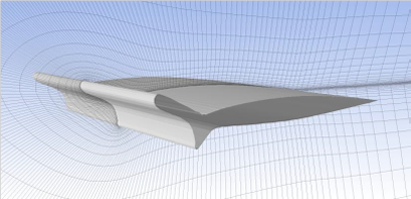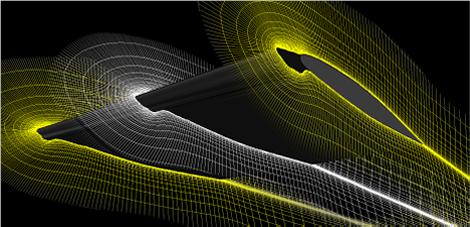Use of RBF Morph mesh morphing for the estimation of airfoil performances in presence of ice profiles


Flying in icing atmospheric conditions can be a serious safety problem. Ice build-up generally occurs when supercooled droplets impinge on aircraft surfaces, most commonly the engine and the windward face of the wings, causing a variation in the overall vehicle fluid dynamics.
Ice accretions can increase the drag force and decrease the lifting characteristics of the aerofoil, so more power and a greater angle of attack is required to maintain flight conditions. Wing Icing causes not only stall to occur at lower attack angles, but an uneven ice distribution that can diminish dangerously the vehicle manoeuvrability.
Understanding and studying the icing problem is then of capital importance, and an ice accretion analysis has thus became a must during the design process. Ice build-up can be investigated by means of flight tests, wind tunnels or numerical simulations. Flight tests are the most realistic and the most expensive too, so they are used in certain conditions only or in the final stage of the analysis. Wind tunnels can recreate exact ice shapes, but the control over the dimensionless parameters can be very hard. Computational fluid dynamics by the other hand is widely used because it’s a low cost alternative than can simulate relatively good the whole icing process, allowing to change instantly an infinite number of related parameters. Although historically NASA and DERA were the main contributors to the numerical models development, nowadays there are several different accretion models from all the major international agencies, such as Lewice (NASA), Trajice2 (DERA), Capta (ONERA), Multi-ice (CIRA) and fensap-ice (NTI).
A typical icing accretion model consists of two main modules that work seamlessly together. The first one deals with the droplets trajectory, and determines the collection efficiency distribution over the whole body. The second one computes a thermodynamic analysis to establish, given the collection efficiency, the ice thickness in any given point. Results from the accretion model can be then used to model a new shape in the analysis environment used for the fluid dynamic simulation. There has therefore to be a direct connection between the ice accretion model and the CFD solver, that can be used cyclically to compute back the flow field for the collection efficiency determination of the new configuration. Being able to generate a high quality grid in the shortest time possible is a major challenge as it is a possible bottleneck of the whole ice accretion analysis in terms of both time and quality.
In this study an icing application of mesh morphing by means of Radial Basis Functions is presented. Being able to regenerate a modified grid in the shortest amount of time is critical when dealing with an ice accretion model, as it is required cyclically at every step by the accretion model itself.
RBF morphing provides the ability to morph the wing profile assuring both speed and quality, allowing to define the displacement of the interested nodes only.
Integrating an RBF morpher into the icing analysis process, allows to optimize efficiently the workflow in terms of both time and quality.


Click here for more information.
